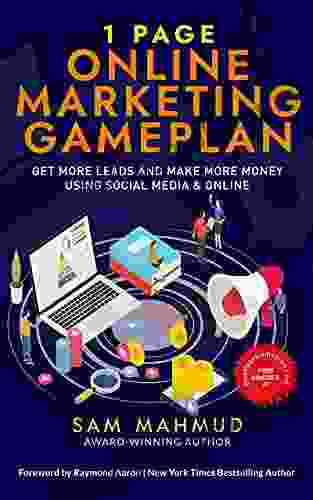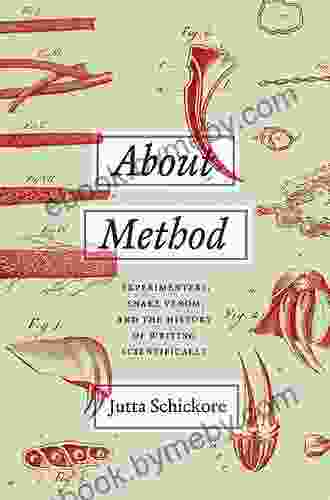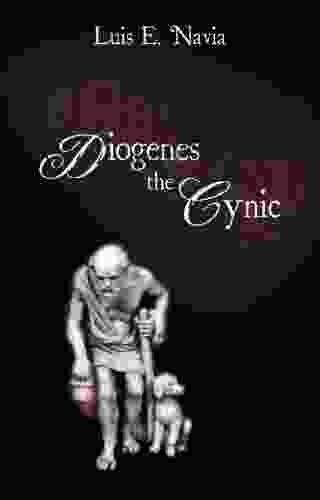Experimenters, Snake Venom, and the History of Writing Scientifically

In 1784, a young Italian physician named Francesco Redi conducted a series of experiments that would change the course of scientific history. Redi was interested in disproving the common belief that maggots spontaneously generated from decaying meat. To do this, he placed meat in a series of jars, some of which were sealed and some of which were left open. He then observed what happened to the meat over time.
5 out of 5
| Language | : | English |
| File size | : | 1709 KB |
| Text-to-Speech | : | Enabled |
| Screen Reader | : | Supported |
| Enhanced typesetting | : | Enabled |
| Word Wise | : | Enabled |
| Print length | : | 322 pages |
| Lending | : | Enabled |
| X-Ray for textbooks | : | Enabled |
In the jars that were sealed, no maggots appeared. However, in the jars that were left open, maggots quickly appeared. Redi's experiment showed that maggots do not spontaneously generate from decaying meat, but rather come from eggs that are laid by flies. This experiment was one of the first to use the scientific method, and it helped to establish the importance of controlled experiments in science.
Redi's work was just one of many examples of how scientists have used writing to communicate their findings. From the earliest days of science, scientists have used writing to record their observations, experiments, and theories. These writings have played a vital role in the development of scientific knowledge, and they have helped to shape the way we think about the world.
The history of scientific writing is a fascinating story, and it is one that is still unfolding. In recent years, there have been significant changes in the way that scientists write and communicate their findings. The rise of the internet has made it possible for scientists to share their work with a wider audience than ever before. This has led to a new era of scientific collaboration and discovery.
As the history of scientific writing continues to unfold, it is clear that writing will continue to play a vital role in the development of scientific knowledge. By understanding the history of scientific writing, we can better appreciate the importance of clear and concise communication in science.
The Role of Snake Venom in the History of Scientific Writing
Snake venom has played a significant role in the history of scientific writing. In the early days of science, snake venom was used as a tool to study the effects of poisons. Scientists would inject animals with snake venom and then observe what happened. These experiments helped to build our understanding of the human body and how it reacts to toxins.
In the 19th century, snake venom was used by scientists to develop new vaccines and antivenoms. These advances saved countless lives and helped to make the world a safer place. Today, snake venom is still used by scientists to study a variety of topics, including pain perception, blood clotting, and cancer.
Snake venom is a fascinating and powerful substance. It has played a significant role in the history of scientific writing, and it continues to be an important tool for scientists today.
The Importance of Clear and Concise Scientific Writing
Clear and concise scientific writing is essential for the development of scientific knowledge. When scientists are able to communicate their findings clearly and concisely, it is easier for other scientists to build on their work. This leads to a more rapid accumulation of scientific knowledge.
Unfortunately, not all scientific writing is clear and concise. Some scientists write in a jargon-filled style that is difficult to understand. Others write in a long-winded and rambling style that makes it difficult to follow their train of thought.
Clear and concise scientific writing is a skill that can be learned. By following a few simple rules, scientists can write more effectively and make their work more accessible to others.
Here are a few tips for writing clear and concise scientific writing:
- Use simple language and avoid jargon.
- Be specific and avoid generalities.
- Be organized and logical.
- Proofread your work carefully.
By following these tips, scientists can write more effectively and make their work more accessible to others. This will lead to a more rapid accumulation of scientific knowledge and a better understanding of the world around us.
The history of scientific writing is a fascinating story, and it is one that is still unfolding. As the history of scientific writing continues to unfold, it is clear that writing will continue to play a vital role in the development of scientific knowledge. By understanding the history of scientific writing, we can better appreciate the importance of clear and concise communication in science.
5 out of 5
| Language | : | English |
| File size | : | 1709 KB |
| Text-to-Speech | : | Enabled |
| Screen Reader | : | Supported |
| Enhanced typesetting | : | Enabled |
| Word Wise | : | Enabled |
| Print length | : | 322 pages |
| Lending | : | Enabled |
| X-Ray for textbooks | : | Enabled |
Do you want to contribute by writing guest posts on this blog?
Please contact us and send us a resume of previous articles that you have written.
 Book
Book Novel
Novel Page
Page Chapter
Chapter Text
Text Story
Story Genre
Genre Reader
Reader Library
Library Paperback
Paperback E-book
E-book Magazine
Magazine Newspaper
Newspaper Paragraph
Paragraph Sentence
Sentence Bookmark
Bookmark Shelf
Shelf Glossary
Glossary Bibliography
Bibliography Foreword
Foreword Preface
Preface Synopsis
Synopsis Annotation
Annotation Footnote
Footnote Manuscript
Manuscript Scroll
Scroll Codex
Codex Tome
Tome Bestseller
Bestseller Classics
Classics Library card
Library card Narrative
Narrative Biography
Biography Autobiography
Autobiography Memoir
Memoir Reference
Reference Encyclopedia
Encyclopedia Leigh Hatts
Leigh Hatts Kate Saller
Kate Saller Shane O Mara
Shane O Mara Murray Rothbard
Murray Rothbard Justene Hill Edwards
Justene Hill Edwards Keith Everett
Keith Everett Julius Schnorr Von Carolsfeld
Julius Schnorr Von Carolsfeld Magi Nams
Magi Nams Kamala Harris
Kamala Harris Karen Wambach
Karen Wambach Kai Harris
Kai Harris Kathy Allen
Kathy Allen P J E Peebles
P J E Peebles Gay Talese
Gay Talese Justin Farley
Justin Farley Ken Bloom
Ken Bloom Garth Nix
Garth Nix Ken C Pohlmann
Ken C Pohlmann Katherine Locke
Katherine Locke Kamal Saleem
Kamal Saleem
Light bulbAdvertise smarter! Our strategic ad space ensures maximum exposure. Reserve your spot today!

 Fyodor DostoevskyUnraveling the Epic Battles of the Pacific Theater: Pearl Harbor, Iwo Jima,...
Fyodor DostoevskyUnraveling the Epic Battles of the Pacific Theater: Pearl Harbor, Iwo Jima,...
 Christopher WoodsUnlock the Power of Social Media: Get More Leads And Make More Money Online
Christopher WoodsUnlock the Power of Social Media: Get More Leads And Make More Money Online Emanuel BellFollow ·17.2k
Emanuel BellFollow ·17.2k Yasushi InoueFollow ·16.1k
Yasushi InoueFollow ·16.1k Graham BlairFollow ·4.8k
Graham BlairFollow ·4.8k Ted SimmonsFollow ·15.7k
Ted SimmonsFollow ·15.7k John GrishamFollow ·13.3k
John GrishamFollow ·13.3k Jimmy ButlerFollow ·2.1k
Jimmy ButlerFollow ·2.1k Grant HayesFollow ·19.6k
Grant HayesFollow ·19.6k Gus HayesFollow ·8.1k
Gus HayesFollow ·8.1k

 George Orwell
George OrwellPandemic with Dogs: Two Essays
By Susannah Charleson In the midst of...

 Leo Mitchell
Leo MitchellAdam Smith's The Wealth of Nations: A Classic Treatise on...
Adam Smith's The...

 Cade Simmons
Cade SimmonsUnlock Your Communication Potential: Effective Techniques...
Communication is a fundamental...

 Floyd Richardson
Floyd RichardsonFire and Ashes: Success and Failure in Politics
Fire and Ashes: Success and...

 Oliver Foster
Oliver FosterUnlock the Enchanting Mystery of Ken Follett's "The Key...
Embark on a captivating literary journey into...
5 out of 5
| Language | : | English |
| File size | : | 1709 KB |
| Text-to-Speech | : | Enabled |
| Screen Reader | : | Supported |
| Enhanced typesetting | : | Enabled |
| Word Wise | : | Enabled |
| Print length | : | 322 pages |
| Lending | : | Enabled |
| X-Ray for textbooks | : | Enabled |









